One of the most common pleasures of a vegetable grower is growing fresh tomatoes, but unfortunately, tomatoes are susceptible to a variety of illnesses and pests.
Without prompt control measures, these tomato diseases can also be lethal. Therefore, it’s important to know which of these tomato diseases will spread to other plants.
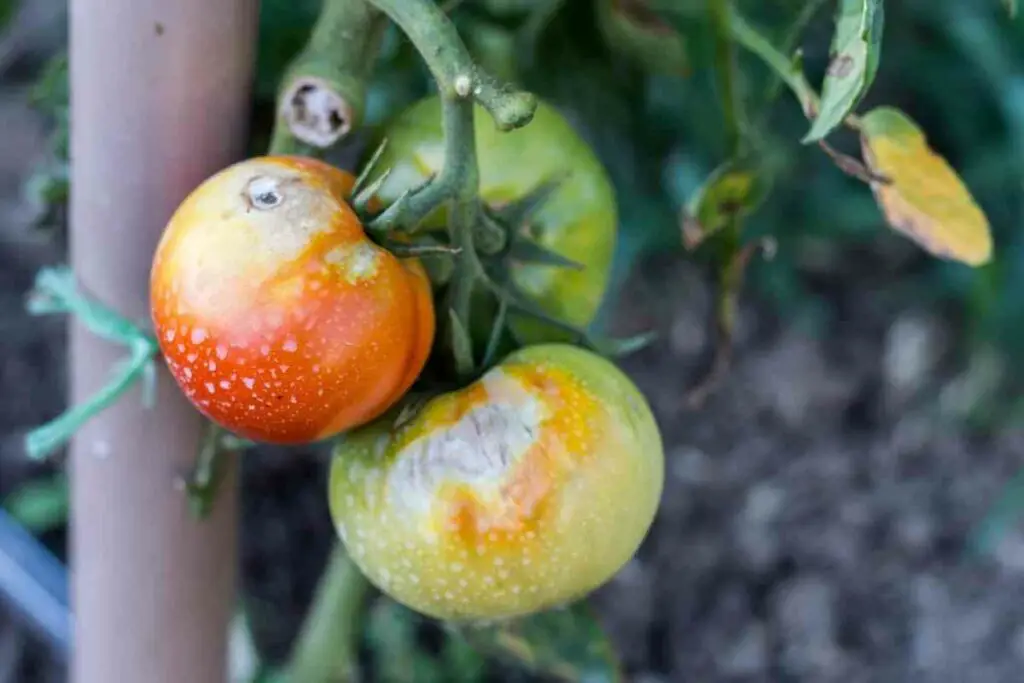
Numerous bacterial diseases of tomato plants, like early blight fungus and blossom-end rot, can all affect tomato plants. Take note that these diseases will most likely appear as dots on foliage and fruits. These plant disease-causing bacteria can spread in a variety of ways, including by being transported by the wind, birds, insects, or splattered around by rain.
Continue reading to learn more about tomato diseases, including whether tomato diseases can spread to other plants, as well as how to prevent these diseases from spreading, and more.
Table of Contents
Can Tomato Diseases Spread to Other Plants?
Tomatoes can contract a variety of diseases, illnesses, and viruses.
Unfortunately, they also frequently have the ability to infect several other plant species as well.
The majority of these illnesses are fungi in origin and are sometimes difficult for the untrained eye to distinguish between.
The good news is that you may take steps in your garden to lessen how these diseases affect your summer harvests.
How to Prevent Diseases From Spreading to Your Other Tomato Plants
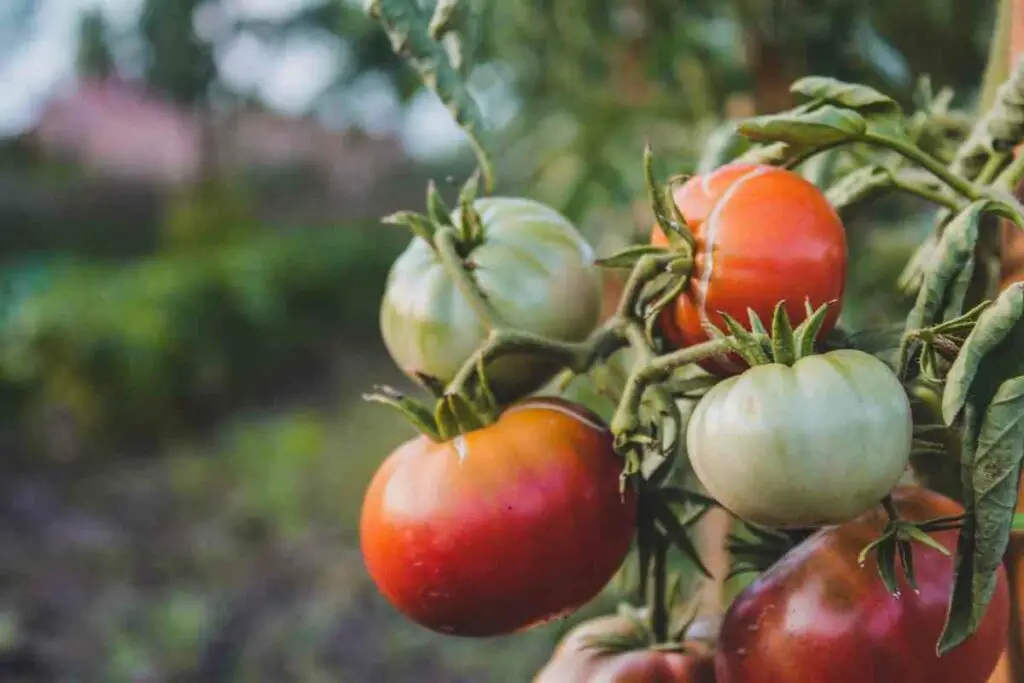
Adjust Your Watering Habits
Diseases caused by fungi prefer warm, humid environments.
Therefore, it is important that you keep the soil around your tomato plant as dry as you can.
For example, when cultivating tomatoes, try using drip irrigation, a hose with a wand, or a watering can to water your plants at the base.
Consider Using Mulch
Many tomato diseases are dispersed by rain or irrigation water splashing up onto the plant.
To reduce splashing, mulch your vegetable garden plants’ bases with hay, straw, leaves, or grass clippings.
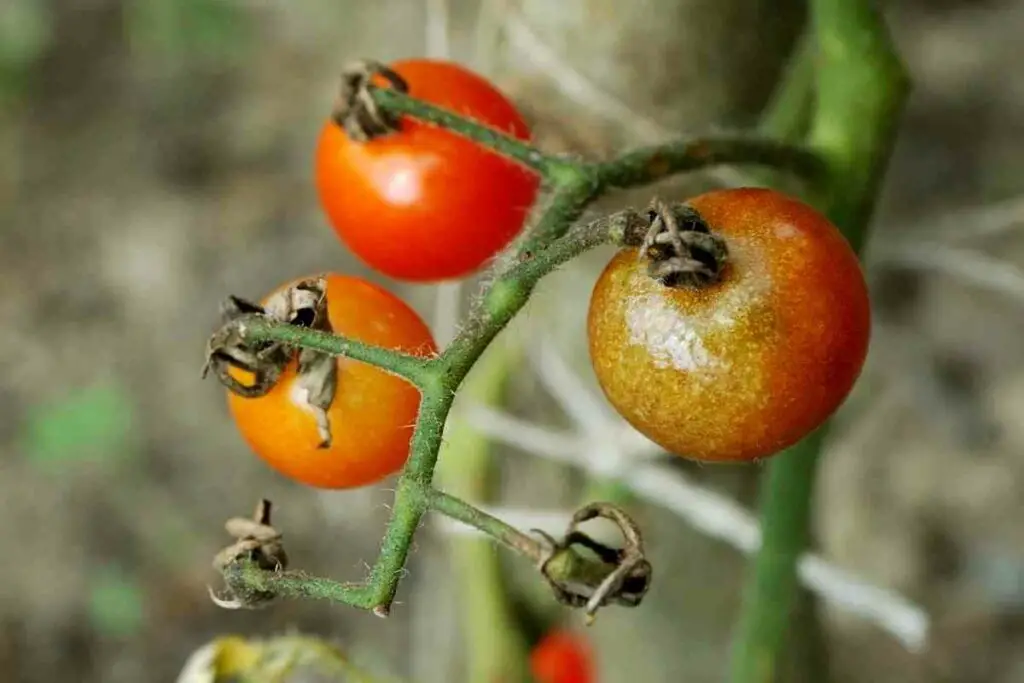
Performing Plant Upkeep
Numerous tomato illnesses begin on the lowest leaves and steadily advance up the plant.
You can, therefore, try to stop the spread of the illness by removing any leaves that are infected.
Performing frequent pruning can also help your tomato plants avoid any unwanted illnesses.
Using Fungicides
While fungicides cannot eradicate a disease that has already afflicted your plant’s leaves, they can assist prevent it from spreading to healthy leaves.
For Example – Natural fungicides can be produced at home using baking soda, sulphur, or copper. Compost tea and seaweed solutions are also used by professional gardeners.
Take note, however, that it is first always recommended to remove any sick leaves before giving your plant thorough spraying of fungicide.
What Are the Top 5 Most Common Tomato Diseases?
1. Early Blight Fungus
Leaf spots and yellowing can, unfortunately, signal the beginning of an early blight infection at the base of the plant.
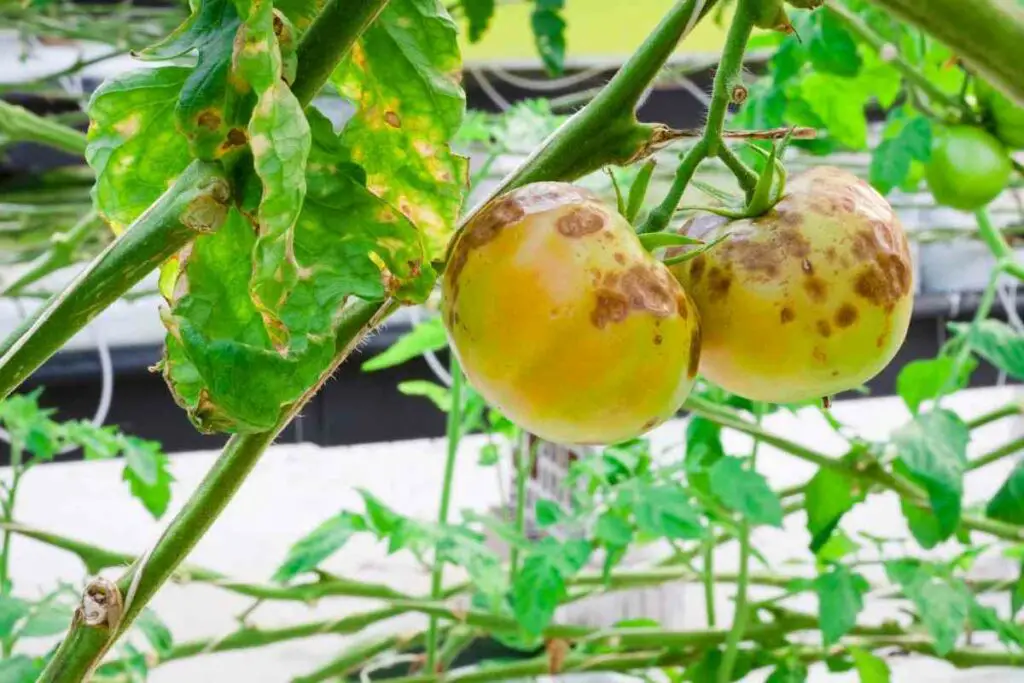
Take note that if your tomato plant begins to develop an early blight fungus infection, small black blotches will first appear on older leaves close to the ground.
It is also important to note that while none of the tomato plant varieties available to home growers today are completely resistant to early blight, several of them can give some protection from this plant disease.
Overall, early blight is a pretty prevalent issue with tomato plants, so you might not be able to totally prevent it even if you get a resistant type.
2. Anthracnose
On tomato fruits, this fungus appears as a small, round, depressed patch. Eventually, rings form all around the initial location.
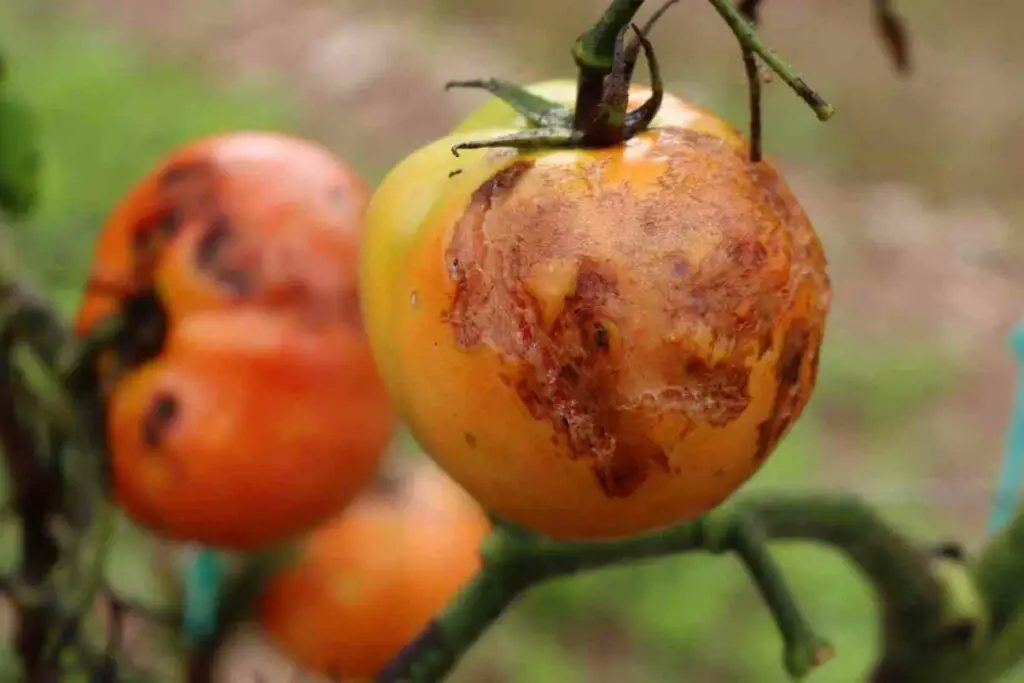
If you think that your tomato plant has contracted Anthracnose, fruits should be harvested as they ripen.
By completing this task, the flesh of some fruits, particularly overripe tomatoes, may rot entirely through.
Overall, the Anthracnose fungus is most prevalent during warm, rainy weather, and spores are disseminated by splashing water.
3. Mosaic Virus
This virus, commonly referred to as the mosaic virus, not only affects tomatoes but can also, unfortunately, affect several other plant species.
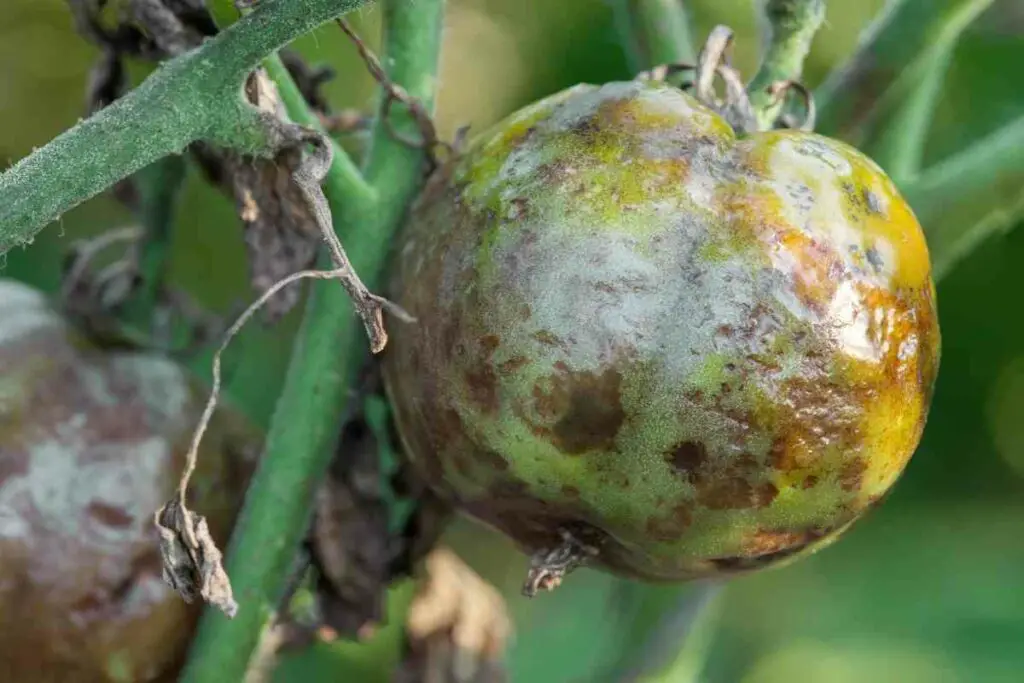
Although the mosaic virus doesn’t harm the plant, it lowers the yield and calibre of the fruits.
The light green and yellow mottling and patterns on the leaves and fruits of plants afflicted by the virus give it its name.
Additionally – Leaves may develop in crooked shapes that resemble ferns.
If you think that your tomato plant has contracted the mosaic virus, take note to try to avoid touching the plant as much as you can since the virus can enter through incisions in the leaves and stems.
4. Blossom-End Rot
Blossom-end rot is another common tomato issue that affects the fruit.
This disease is, unfortunately, brought on by a deficiency in calcium typically caused by varying water availability.
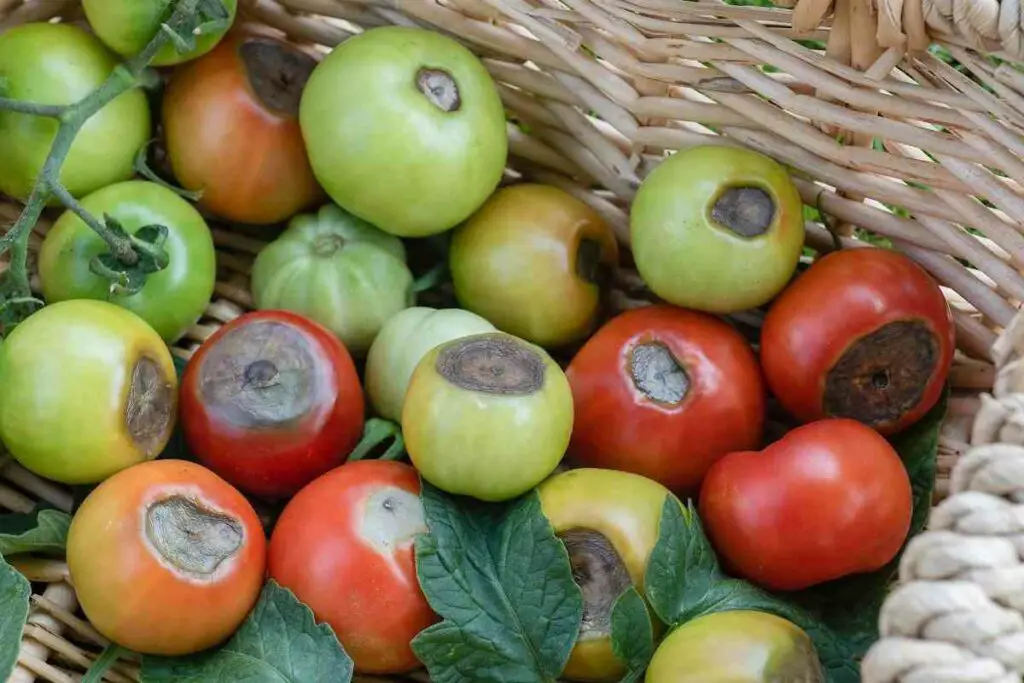
If your tomato plant has contracted blossom-end rot, opposite the stem, your plant will appear sunken and lifeless. Take note, however, that as the fruit ripens, the area will grow.
Overall, by encouraging consistent, stress-free plant development, you can avoid blossom-end rot. This can also be accomplished by keeping soil that is wet but not soggy.
After all, you should be watering your tomato plants often.
5. Fungal Wilt
Wilt infections are caused by fungi in the soil that penetrate your tomato plants through immature roots and then begin to block the vessels that deliver water to the plant’s roots and stems.
For example, if your tomato plants have contracted fungal wilt, on sunny days, the plants start to wilt without enough water, however, they seem to revive at night.
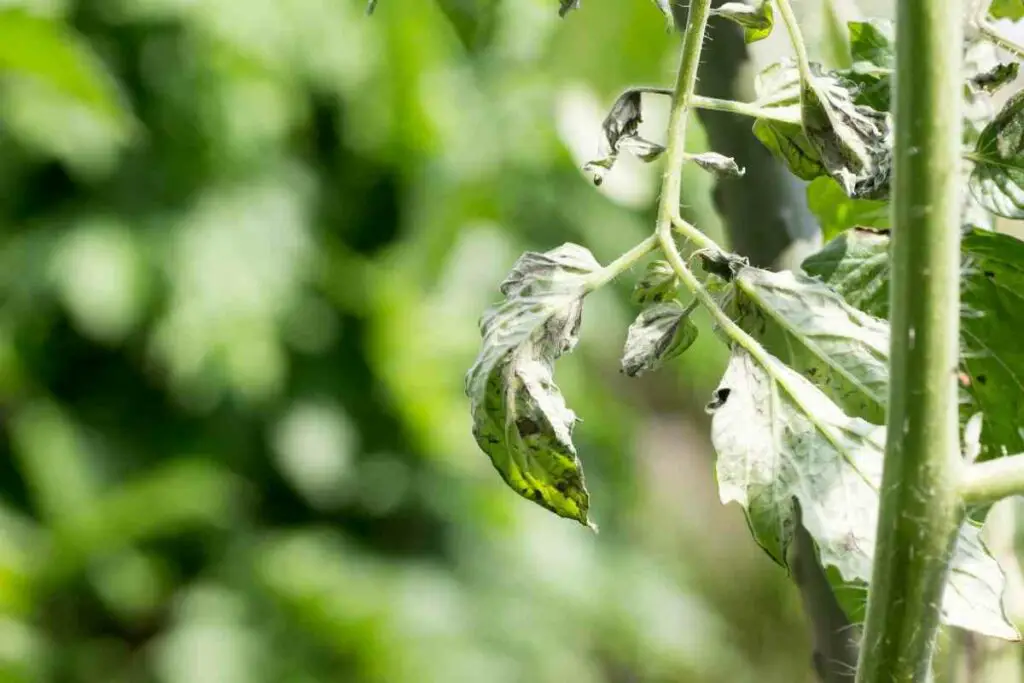
The leaves of the tomato plant may also initially develop tomato wilt, which causes them to lose colour, before starting to die back from the tips. Overall, until the entire facility is impacted, the process is repeated.
Additionally, it’s also crucial to remember that, during a period of four to six years, one should not produce tomato, eggplant, potato, or pepper plants in the area where one of these tomato wilt diseases has occurred.
After all, the fungi that cause tomato wilt may survive that long in the soil without infecting a new host.
Final Thoughts
Numerous bacterial diseases of tomato plants, like early blight fungus and blossom-end rot, can all affect tomato plants.
Take note that these diseases will most likely appear as dots on foliage and fruits.
These plant disease-causing bacteria can spread in a variety of ways, including by being transported by the wind, birds, insects, or splattered around by rain.
- How to Dry Basil Leaves: A Professional Guide
- Is an Avocado a Fruit or Vegetable? Simple Answer and Explanation
- Does Pineapple Have Seeds? Exploring the Anatomy of Pineapples
- Blooming Through Winter: Can I Grow Vegetables Indoors in the Winter?
- What Can You Grow in a Greenhouse All Year Round: A Guide to Year-Round Greenhouse Gardening
- Are Blueberries Blue? Debunking the Myth of Their Color
















